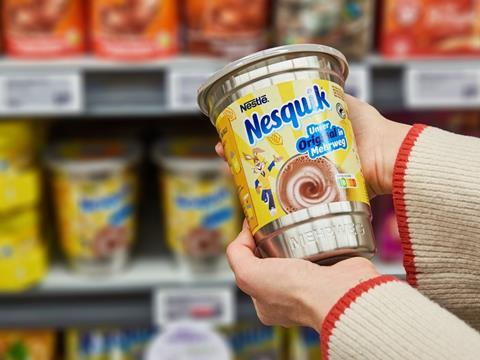
In theory, reusable and refillable packaging solutions are two of several pathways to achieving circularity, reducing waste, and tackling pollution. So, why hasn’t every trial or pilot been successful? Nestlé’s Jodie Roussell, Global Public Affairs Lead for Packaging and Sustainability, and Antje Shaw, Global Packaging Sustainability Manager, reflect on the firsthand knowledge the company has gained and set out a roadmap for future success.
World Refill Day 2023 offers an opportunity to reflect on the successes, challenges, and opportunities for developing sustainable approaches to packaging.
Reuse and refill at scale requires cooperation between manufacturers, retailers, start-ups, service providers, and policymakers to drive the necessary changes at a systems level. Reusable packaging and packaging-free delivery systems offer a significant opportunity to reduce the volume of packaging manufactured and the post-consumer packaging waste that needs to be managed by infrastructure systems.
This is why, as part of the Business Coalition for a Global Plastics Treaty, we support government negotiators’ efforts to enable reuse and refill. We already advocate jointly for reuse and refill with over 100 other companies who endorsed the Coalition’s vision including:
• Moving away from single-use plastics in favor of reusable and more durable solutions
• Designing products and systems for all plastics to be reused or recycled at scale
• Accelerating the uptake of new business and delivery models at scale
For our own part, we have run over 20 pilots in 12 countries with various solutions with external partners and key customers in North America, Latin America, Africa, Europe, and Southeast Asia. So far, regrettably, repurchase rates and return rates on all these pilot projects have fallen below expectations and none has proven to be scalable. We have learned two key reasons for this.
Firstly, consumers expect high levels of ease of use and convenience, all at low cost. Consumers perceive the return of packaging or empty containers for refill as an extra effort and we have not yet found solutions that are sufficiently appealing for consumers to adopt this new way of shopping.
Secondly, there are specific challenges in hot and humid geographies, where pilots have failed due to concerns around food safety, shelf-life, and quality.
We will continue our research and pilots across the globe, building on our previous learnings, and continue to roll out reuse and refill solutions where possible.
We have also learned that no company can build this system alone and we know there is more work to do with retail and supply chain partners. This is why we are we are engaged in projects with value chain partners at the World Economic Forum on measurement metrics, PR3 on reuse system standards, the Consumer Goods Forum and Ellen MacArthur Foundation to share learnings and help advance the adoption of reuse and refill at scale.
Finally, we seek to share our practical insights with governments, to request enabling conditions that support the scaling up of voluntary pilots and best practices. Based on our learnings from the pilots, these enabling conditions for reuse and refill at scale include:
1. Legislation at the international level for a product category by product category approach to reuse and refill systems for packaged consumer goods. This legislation should recognize the differences between foods, beverages, personal care, household products, etc.
2. Decarbonization of logistics systems towards carbon-neutral options.
3. Support for investments to modify industrial infrastructure, like investments in large-scale sorting, reverse logistics infrastructure, standardized pooled packaging, packaging return systems/bins, or regional washing facilities.
4. Review of competition laws that may hinder collective approaches to standardized shared packaging pools.
5. Implementation of global standards on systems hygiene, safety, and quality management.
6. Retroplan of a minimum time frame required for the transition; for example, a ten-year transition.
We will continue to innovate, research, pilot, and partner around the world, building on our previous learnings, and continue to roll out reuse and refill solutions where possible.
If you liked this article, you might also enjoy:
McKinsey on whether or not on-pack sustainability claims affect consumer spending












No comments yet